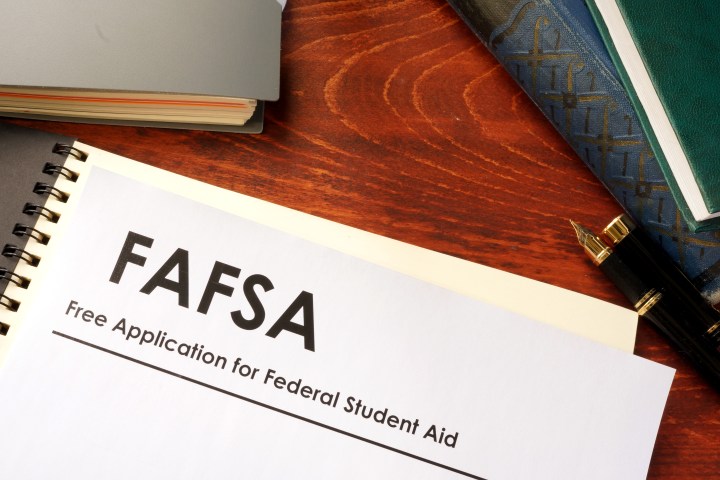
Financial aid applications are down. Does that mean fewer college students?
Financial aid applications are down. Does that mean fewer college students?

The United States government has a program that helps students pay for college. High school seniors fill out the Free Application for Federal Student Aid, or FAFSA, and the aid can help with tuition, room and board, books and supplies.
But applications have fallen during the pandemic, especially among low-income high school seniors and students of color. That has repercussions now and for the future.
Getting all eligible students to fill out the financial aid form was a struggle before the pandemic, said Cristobal Salinas, a professor in the College of Education at Florida Atlantic University.
“There’s a lot of questions that require financial information about our parents or the students themselves, their family income,” Salinas said. “It is challenging. We’re asking them to put themselves out there.”
He said students are more likely to complete the form if they have help, like they’d get in school.
“Students don’t necessarily have in-person access to their college advisers, high school counselors,” Salinas said.
Applications are down 9% compared to this time last year, said MorraLee Keller with the National College Attainment Network. She said some of the decline may be due to uncertainty.
“Students are pausing, if that’s the best word, and still thinking about what their post-high school plans may be, because they’re kind of waiting to see what college looks like in the fall of 2021,” Keller said.
Aid applications have dipped even more among students from low-income Black and brown communities, said Elisabeth Barnett, a research scholar at Teachers College at Columbia University.
“People are out of work, obviously making less money,” Barnett said, “and also, it has an impact on mental health and ability to cope with challenging situations like filling out a FAFSA, you know, even just planning for the future.”
Fewer students filling out aid forms means fewer of them may go to college at all, said Mark Kantrowitz, an expert on financial aid.
“It certainly puts a lot of financial pressure on the colleges,” Kantrowitz said. “And so they have to react by cutting their expenses in other ways.” That could include laying off staff or cutting majors.
College budgets may recover, but for this generation of students, the effects will be permanent.
“There will be fewer college graduates who can work in the jobs that the nation needs people to work in,” Kantrowitz said. “So that can have repercussions for the economy.”
He also said it will lower their income potential, possibly for their whole working lives.
Last fall, colleges saw a 20% drop in enrollment compared to the previous year for first-year students, and colleges are expecting to see enrollment drop again this fall.
There’s a lot happening in the world. Through it all, Marketplace is here for you.
You rely on Marketplace to break down the world’s events and tell you how it affects you in a fact-based, approachable way. We rely on your financial support to keep making that possible.
Your donation today powers the independent journalism that you rely on. For just $5/month, you can help sustain Marketplace so we can keep reporting on the things that matter to you.












